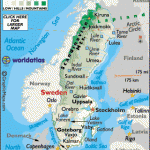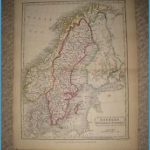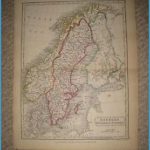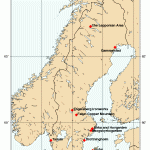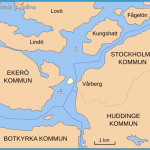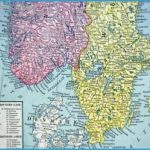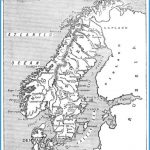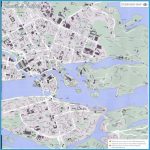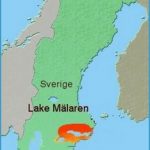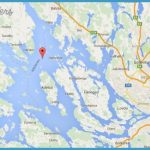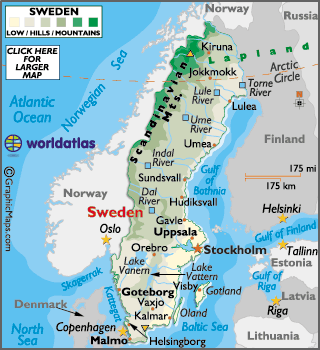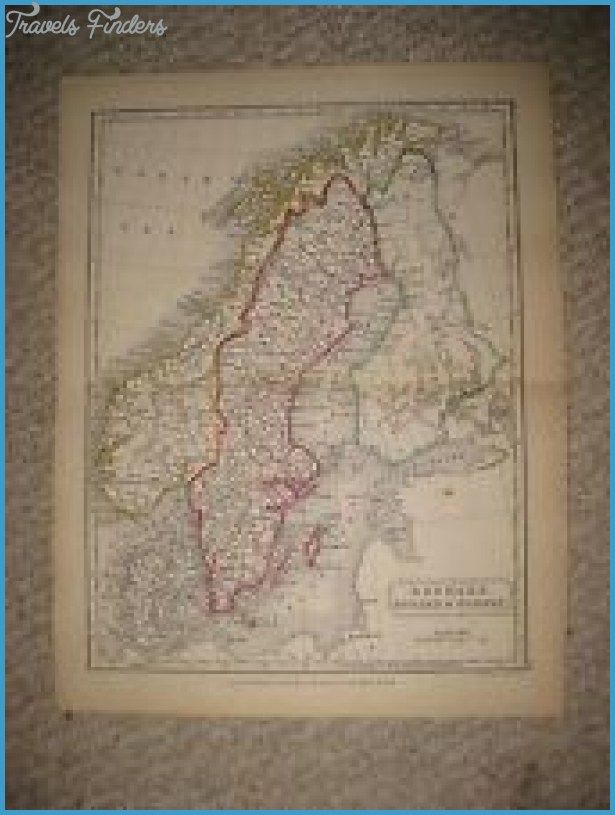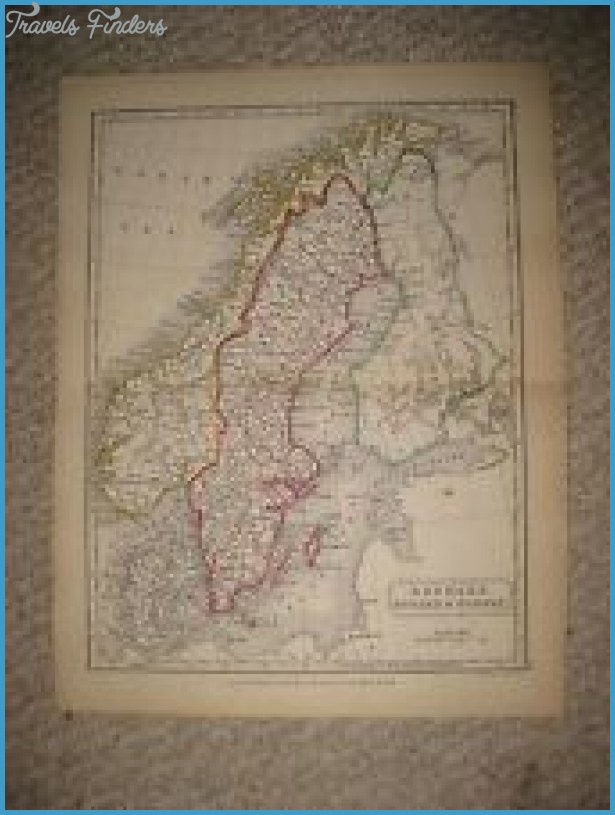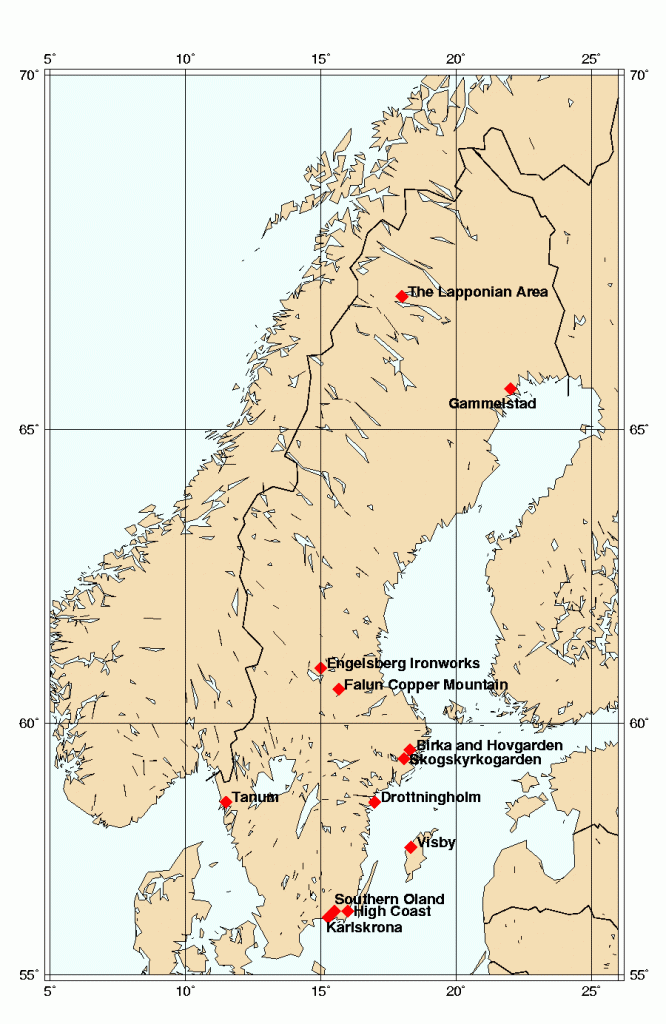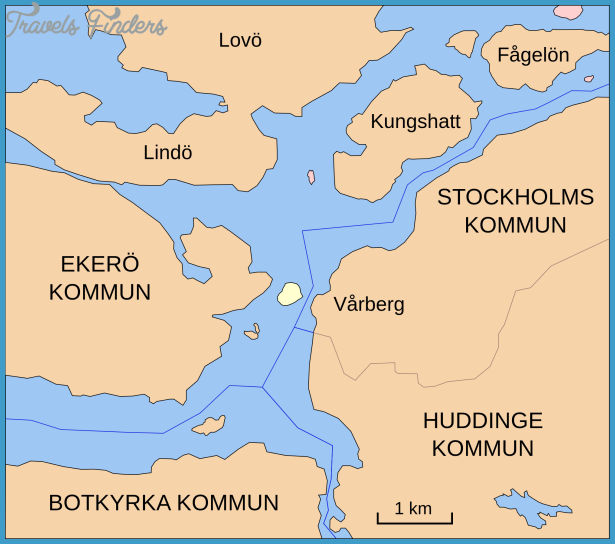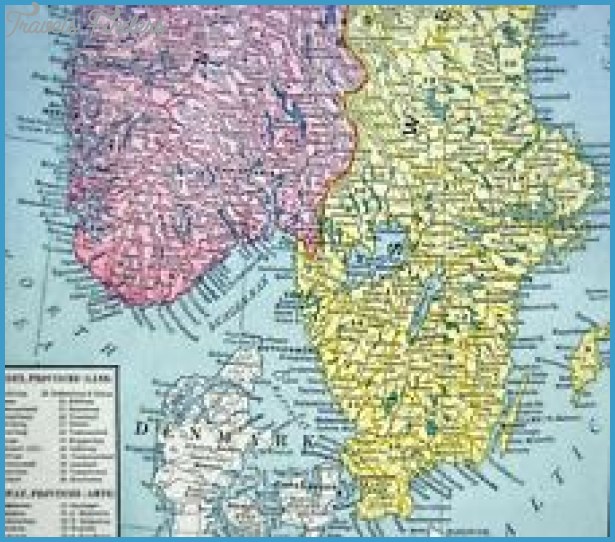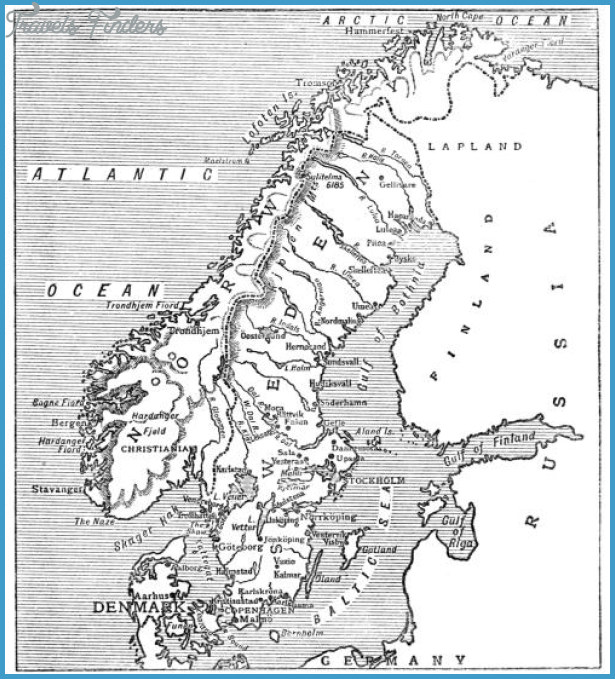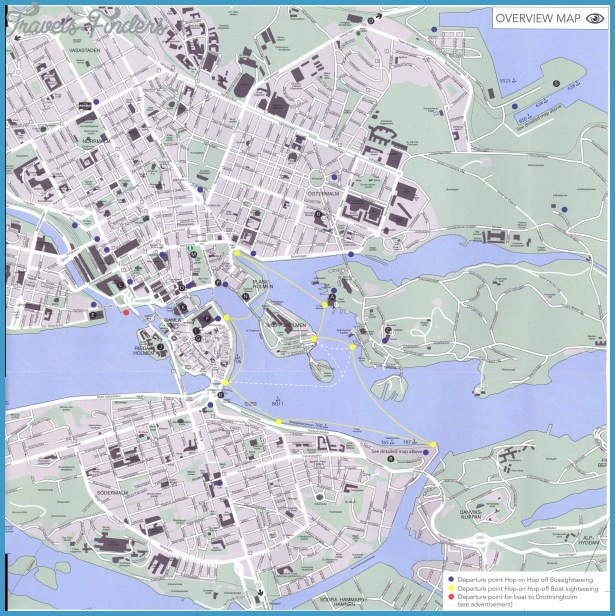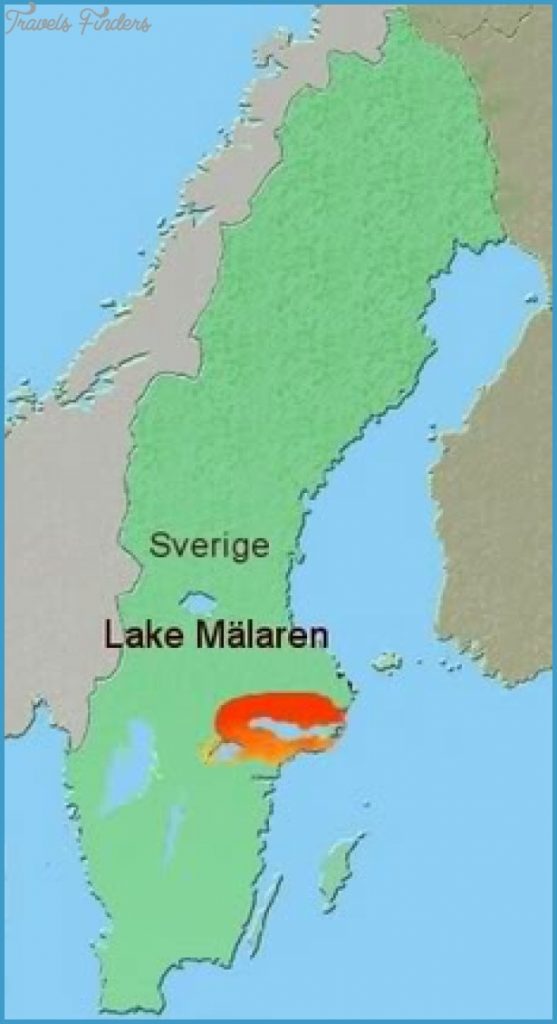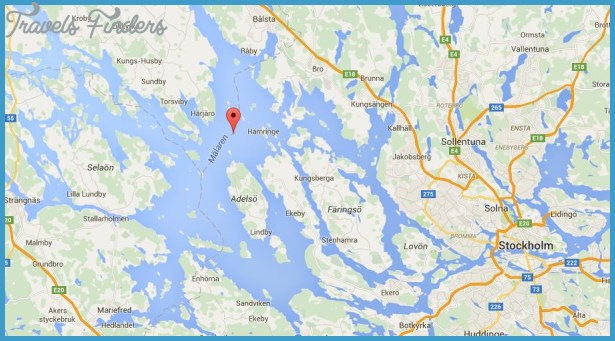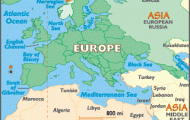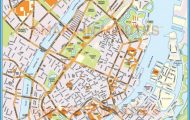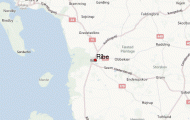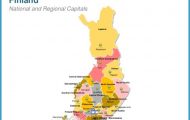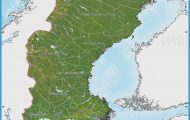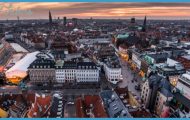Provinces: Stockholms Ian, Sddermanlands Ian, Vastmanlands Ian.
Regions: Sodermanland, Uppland, Vastmanland.
Lake Malar, Sweden’s third largest lake (after Lakes Vanern and Vattern), lies immediately W of Stockholm. 117 km (73 miles) long, it extends through the provinces of Vastmanland, Sodermanland, Uppsala and Stockholm to the Baltic, with a total area of 1140 sq. km (440 sq. miles) and a greatest depth of 64 m (210 ft). It is irregularly shaped, with many ramifications and inlets. Its principal tributary rivers are the Eskilstunaa, Arbogai, Hedstrom, Kolbacksa, SvartS, OrsundaS and Fyrisa.
At one time Lake Malar was an arm of the Baltic, but since the 1 2th c. because of a fall in the water level, it has been an inland lake. Since 1943, the lake has been regulated to prevent flooding, and to avoid unduly low water levels hindering shipping. Vessels with a draught of up to 5-5 m (18 ft) can now sail from the Baltic to Stockholm on the Sodertalje Canal and Hammarbyleden. On the shores of Lake Malar are many castles and manor-houses.
Strangnas (Uffhalls Wardshus, 26 Rogge, 55 b.) is a small 13th c. town in which Gustavus Vasa was chosen as king in 1 523. The Cathedral was begun in the 13th c. and completed in the 15th by Bishop Rogge. The vault paintings in the nave date from the 14th c. the paintings in the choir from the second half of the 15th c. The reredos (1490) on the high altar, with a profusion of figures, came from Brussels. In front of the altar, to the left, is the splendid gilded armour of Charles IX, whose tomb is in the Cathedral. Other monuments are those of Isabella, daughter of John III, and Bishops Thomas and Rogge. The 17th c. printing press once belonging to the Cathedral is now in Strangnas Museum. Near the Cathedral are the medieval Consistory House and the Paulinska Hus, built for Laurentius Paulinus Gothus, bishop of Strangnas from 1 609 to 1 637.
It is also worth stopping at the craft workshop of GrassagSrden (open to visitors in summer). Although Strang-nas is now a garrison town as well as the administrative and cultural hub of the surrounding area, it has preserved an attractive old-world charm, with narrow lanes and red-painted timber houses.
Eskilstuna (pop. 70,000; Stadshotellet, 1 83 Vita Hasten, 32 Smeden, 1 38 b.) lies on the EskilstunaS, which links Lake Malar with Lake Hjalmar. The little trading settlements of Tuna and Fors grew up here at an early stage. Legend has it that St Eskil, the apostle of Soderman-land, is buried at Tuna.
The beginnings of the ironworking industry in this region date to the 1 6th c. In 1 654, a large iron foundry was established here by a Livonian, Reinhold Rademacher, at the behest of Charles X; this was the nucleus out of which the later steel industry developed. The foundry was designed by Jean de la Vallee, the architect responsible for the planning of the town.
In the middle of the town is the Fristad-storg, with the Town Hall (1897), a fountain (The Honour and Joy of Labour) by Ivan Johnson and a sculpture (TheSmiths) by Allan Ebeling.The church on the other side of the square was designed by Otar Hokerberg (1929). Nearby is Fors Church, which dates from the 12th c„ with later alterations and restorations; notable features of the interiorarethe unusual wood-carving and the coats of arms. The six best preserved of Reinhold Rademacher’s forges, at 50 Rademachergatan, form part of the town’s Open-Air Museum, which also includes the Folkets Park (People’s Park) and a zoo. There are also displays illustrating the town’s modern industries, particularlycutlery, for which Eskilstuna is renowned. Dramatic performances are given daily in the park during the month of July. Eskilstuna also has a Museum of Technology and a Museum of Art (primarily works by Scandinavian artists).
Bjork6,Gripsholm Castle, Mariefred: see under Stockholm. VasterSs: 287.

